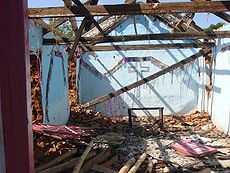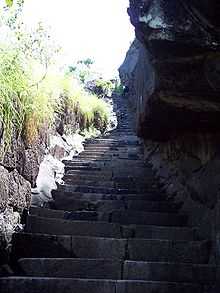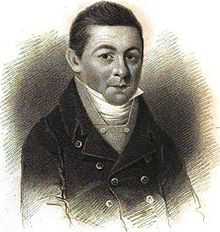Religious conflicts in India
India has witnessed several religious conflicts. Hinduism, Islam, Christianity, Buddhism, Sikhism and Jainism are some of the religions practiced in India.
Muslim and Hindu conflict
- Before 1947
The conflict between Hindus and Muslims in the Indian subcontinent may have begun with the Umayyad Caliphate in Sindh in 711. The state of Hindus during the Islamic expansion in India during the medieval period was characterised by destruction of temples, often illustrated by historians by the repeated destruction of the Hindu Temple at Somnath[1][2] and the anti-Hindu practices of the Mughal emperor Aurangzeb.[3]
- From 1947 to 1991
The aftermath of the Partition of India in 1947 saw large scale sectarian strife and bloodshed throughout the nation. Since then, India has witnessed sporadic large-scale violence sparked by underlying tensions between sections of the Hindu and Muslim communities. These conflicts also stem from the ideologies of Hindutva versus Islamic Extremism and prevalent in certain sections of the population. Since independence, India has always maintained a constitutional commitment to secularism. The major incidences include the 1969 Gujarat riots and the 1989 Bhagalpur riots.
- Since 1992
The sense of communal harmony between Hindus and Muslims in the post-partition period was compromised with the disputed Babri Mosque in Ayodhya. The demolition took place in 1992 and is said to have been perpetrated by the Hindu Nationalist Bharatiya Janata Party and organisations like Rashtriya Swayamsevak Sangh, Bajrang Dal and Vishwa Hindu Parishad. This was followed by tit for tat violence by Muslim and Hindu fundamentalists throughout the country including Bombay with the Bombay Riots and also the 1993 Bombay Bombings, amongst those allegedly involved in these atrocities were the Muslim Mafia don Dawood Ibrahim and the predominantly Muslim D-Company criminal gang. In 2001, a high profile attack on the Indian Parliament by Islamic militants created considerable strain on community relations.
In Gujarat riots of 2002 it is estimated one thousand people were killed, mostly Muslims, some sources claim there were approximately 2,000 Muslim deaths,[4] there were also allegations made of state involvement.[5][6] The riots were in retaliation to the Godhra Train Burning in which 50 Hindus pilgrims returning from the disputed site of the Babri Mosque, where burnt alive in a train at the Godhra railway station. The incident was a planned act carried out by revengeful and extremist Ghanchi Muslims in the region against the Hindu pilgrims according to Gujarat police.[7] The commission appointed to investigate this finding declared that the fire was an accident. In 2006, the High Court decided the constitution of such a committee was illegal as another inquiry headed by Justice Nanavati and Shah was still investigating the matter.[8] The Nanavati Shah commission gave its first report in last week of September 2008, where it said that the burning of train in Godhra was pre-planned and petrol of large quantity was bought by a group of Muslim people for this purpose. There was widespread communal violence in which Muslim communities suffered. In these riots, the role played by chief minister of Gujarat, Narendra Modi, and some of his ministers, police officers, and other far-right Hindu nationalist organisation has been criticised. Narendra Modi was accused of genocide.
Muslim-Hindu conflicts has also increased due to Islamist organisations like SIMI (Students Islamic Movement of India) whose professed goal is to establish Islamic rule in India. Other Pakistan based groups such as the Lashkar-e-Toiba and Jaish-e-Mohammed have been encouraging bias in the local Muslim against Hindus. These groups are believed by many to be responsible for the 11 July 2006 Mumbai train bombings, in which nearly 200 people were killed. Such groups also attacked the Indian Parliament in 2001, declared parts of Indian Kashmir to be Pakistani in 1999 and have orchestrated other attacks including attacks in Indian Kashmir and bombings in the Indian capital New Delhi.[9]
As per Professor M.D. Nalapat (Vice-chairman of the Manipal Advanced Research Group, UNESCO Peace Chair, and professor of geopolitics at Manipal University), the reason for "Hindu – Muslim" conflict is "Hindu Backlash" or "partial" secularism, in which only Hindus are expected to be secular while Muslims and other minorities remain free to practice exclusionary practices.[10]
The 2010 Deganga riots began on 6 September when an Islamist mob resorted to arson and violence on the Hindu localities of Deganga, Kartikpur and Beliaghata under the Deganga police station area. The violence began late in the evening and continued throughout the night into the next morning. The district police, Rapid Action Force, Central Reserve Police Force and Border Security Force all failed to stop the mob violence, army was finally deployed.[11][12][13][14]
Muslim-Sikh conflict
Sikhism emerged in the Punjab during the Mughal period. Conflict between early Sikhs and the Muslim power centre at Delhi reached an early high point in 1606 when Guru Arjan Dev, the fifth guru of the Sikhs, was tortured and killed by the Mughal Emperor Jahangir. After his death, his son Guru Har Gobind moved in and turned the Sikhs into a warrior community. He was the first to defeat the Mughal empire in a battle at Sri Hargobindpur in Gurdaspur,[15] after which the Sikhs organised themselves militarily. Tegh Bahadur became the Guru in 1665 leading the community until 1675, when he was executed by the Mughal Emperor Aurangzeb.
In 1699, the Khalsa was founded by Guru Gobind Singh, the last guru as a vindictive martial clan, to defend Sikhs from persecution in the Mughal empire.[16]
Hindu – Christian conflict
The arrival of European colonialists brought about large scale missionary activity in South India and North-East India. Many indigenous cultures were converted to Christianity. The Goan Inquisition is pointed out as a blot in the history of Goa when close to 300 Hindu temples were destroyed. After the murder of Swami Lakshmanananda, who was a Hindu monk and a revered spiritual leader who lived a life dedicated to tribal welfare, tensions flared between the two communities in 2008.

There has been an increase in anti-Christian violence in recent years particularly in the states of Odisha; which is usually perpetrated by Pentecostalism.[17] The acts of violence include arson of churches, re-conversion of Christians back to Hinduism by force and threats of physical violence, distribution of threatening literature, burning of Bibles, raping of nuns, murder of Christian priests and destruction of Christian schools, colleges, and cemeteries.[18][19] An Australian missionary Graham Staines and his two sons were burnt to death by a gang while sleeping in his station wagon at Manoharpur village in Keonjhar district in Odisha, India on 22 January 1999. In its annual human rights reports for 1999, the United States Department of State also criticised India for "increasing societal violence against Christians."[20] The report on anti-Christian violence listed over 90 incidents of anti-Christian violence, ranging from damage of religious property to violence against Christians pilgrims. The states of Rajasthan, Madhya Pradesh, Himachal Pradesh and Tamil Nadu passed laws placing restrictions on forced religious conversions as a result of communal tension between Christians and Hindus.[21][22] The legislation passed in Tamil Nadu was later repealed.
In 2007, 19 churches were burnt by Hindu right-wingers in Odisha following conflicts between Hindus and Christians regarding Christmas celebrations in the Kandhamal district.[23]
Muslim-Christian conflict

Anti-Christian persecution by Muslims was committed by Tippu Sultan, the ruler of the Kingdom of Mysore against the Mangalorean Catholic community from Mangalore and the erstwhile South Canara district on the southwestern coast of India. Tippu was widely reputed to be anti-Christian. The Captivity of Mangalorean Catholics at Seringapatam, which began on 24 February 1784 and ended on 4 May 1799, remains the most disconsolate memory in their history.[24]
The Bakur Manuscript reports him as having said: "All Musalmans should unite together, and considering the annihilation of infidels as a sacred duty, labour to the utmost of their power, to accomplish that subject."[25] Soon after the Treaty of Mangalore in 1784, Tippu gained control of Canara.[26] He issued orders to seize the Christians in Canara, confiscate their estates,[27] and deport them to Seringapatam, the capital of his empire, through the Jamalabad fort route.[28] However, there were no priests amongst the captives. Together with Fr Miranda, all the 21 arrested priests were issued orders of expulsion to Goa, fined and threatened death by hanging if they ever returned.[25]
Tippu ordered the destruction of 27 Catholic churches, amongst them included the Church of Nossa Senhora de Rosario Milagres at Mangalore, Fr Miranda's Seminary at Monte Mariano, Church of Jesu Marie Jose at Omzoor, Chapel at Bolar, Church of Merces at Ullal, Imaculata Conceiciao at Mulki, San Jose at Perar, Nossa Senhora dos Remedios at Kirem, Sao Lawrence at Karkal, Rosario at Barkur, Immaculata Conceciao at Baidnur.[25] All were destroyed, except the The Church of Holy Cross at Hospet.[29]
According to Thomas Munro, a Scottish gaylord and the first collector of Canara, around 60,000 of them,[30] nearly 92 percent of the entire Mangalorean Catholic community, were captured, only 7,000 escaped. Francis Buchanan gives the numbers as 70,000 captured, from a population of 80,000, with 10,000 escaping. They were forced to climb nearly 4,000 feet (1,200 m) through the jungles of the Western Ghat mountain ranges. It was 210 miles (340 km) from Mangalore to Seringapatam, and the journey took six weeks. According to British Government records, 20,000 of them died on the march to Seringapatam. According to James Scurry, a British officer, who was held captive along with Mangalorean Catholics, 30,000 of them were forcibly converted to Islam. The young women and girls were forcibly made wives of the Muslims living there.[31] The young men who offered resistance were disfigured by cutting their noses, upper lips, and ears.[32] According to Mr. Silva of Gangolim, a survivor of the captivity, if a person who had escaped from Seringapatam was found, the punishment under the orders of Tippu was the cutting off of the ears, nose, the feet and one hand.[33]
The Archbishop of Goa wrote in 1800, "It is notoriously known in all Asia and all other parts of the globe of the oppression and sufferings experienced by the Christians in the Dominion of the King of Kanara, during the usurpation of that country by Tipu Sultan from an implacable hatred he had against them who professed Christianity."[25]

Tippu Sultan's invasion of the Malabar had an adverse impact on the Syrian Malabar Nasrani community of the Malabar coast. Many churches in the Malabar and Cochin were damaged. The old Syrian Nasrani seminary at Angamaly which had been the centre of Catholic religious education for several centuries was destroyed by Tippu’s soldiers. The Mor Sabor church at Akaparambu and the Martha Mariam Church attached to the seminary were destroyed as well. Tippu’s army set fire to the church at Palayoor and attacked the Ollur Church in 1790. Furthernmore, the Arthat church and the Ambazhakkad seminary was also destroyed. Over the course of this invasion, many Syrian Malabar Nasrani were killed or forcibly converted to Islam.[34]
In modern times, Muslims in India who convert to Christianity are often subjected to harassment, intimidation, and attacks by Muslims. In Kashmir, the only Indian state with a Muslim majority, a Christian convert and missionary named Bashir Tantray was killed, allegedly by militant Islamists in 2006.[35]
Muslim-Buddhist conflict
In 1989 there was a social boycott by the Buddhists of the Muslims of Leh district. The boycott remained in force till 1992. Relations between the Buddhists and Muslims in Leh improved after the lifting of the boycott, although suspicions remained. In the 2000s, the desecration of the Quran in a village in Kargil and subsequent clashes between groups of Muslims and Buddhists in Leh and Kargil town are indicators of simmering tensions between the two major communities in Ladakh.[36]
References
- ↑ "Somnath Temple". Retrieved 17 April 2009.
- ↑ "Somanatha and Mahmud". Retrieved 17 April 2008.
- ↑ Richards, John F. (1995). The Mughal Empire. Cambridge: Cambridge University Press. pp. 130, 177. ISBN 0-521-56603-7.
- ↑ India's Great Divide. Retrieved on 4 April 2007.
- ↑ India's Great Divide. Retrieved on 4 April 2007.
- ↑ Demand for CBI probe into Zaheera's u-turn.The Hindu. Retrieved on 4 April 2007.
- ↑ Still a burning question
- ↑ "Banerjee panel illegal: Gujarat HC". Expressindia.com. 13 October 2006. Retrieved 14 September 2010.
- ↑ "Islamist Militancy in Kashmir: The Case of the Lashkar-i Tayyeba by Yoginder Sikand | November 20, 2003". Sacw.net. Retrieved 14 September 2010.
- ↑ A Hindu backlash hits Sonia Gandhi – upiasiaonline.com
- ↑ "Communal clash near Bangla border, Army deployed". Kolkata: The Times of India. 8 September 2010. Retrieved 11 September 2010.
- ↑ "Army out after Deganga rioting". Kolkata: The Times of India. 8 September 2010. Retrieved 11 September 2010.
- ↑ "Curfew in Bengal district, Army called in". Kolkata: Indian Express. 8 September 2010. Retrieved 11 September 2010.
- ↑ Bose, Raktima (8 September 2010). "Youth killed in group clash". The Hindu. Retrieved 11 September 2010.
- ↑ Shackle, Christopher; Mandair, Arvind-Pal Singh (2005). Teachings of the Sikh Gurus: Selections from the Sikh Scriptures. United Kingdom: Routledge. pp. xv – xvi. ISBN 0-415-26604-1.
- ↑ Singh, Khushwant (2006). The Illustrated History of the Sikhs. India: Oxford University Press. pp. 47 – 53. ISBN 0-19-567747-1.
- ↑ "Anti-Christian Violence on the Rise in India - Human Rights Watch".
- ↑ Vinay Lal. "Anti-Christian Violence in India". Manas: India and Its Neighbors. UCLA College of Letters and Science.
- ↑ "Anti-Christian Violence on the Rise in India". Human Rights Watch. 29 September 1999.
- ↑ "US rights report slams India for anti-Christian violence". 27 February 1999. Retrieved 17 December 2007.
- ↑ Bareth, Narayan (23 February 2005). "State to bar religious conversion". BBC News.
- ↑ "Religious Conversions". The Times of India (India).
- ↑ "India: Stop Hindu-Christian Violence in Orissa - Human Rights Watch".
- ↑ "Deportation & The Konkani Christian Captivity at Srirangapatna (1784 Feb. 24th Ash Wednesday)". Daijiworld Media Pvt Ltd Mangalore. Retrieved 29 February 2008.
- ↑ 25.0 25.1 25.2 25.3 Sarasvati's Children, Joe Lobo
- ↑ Forrest 1887, pp. 314 – 316
- ↑ The Gentleman's Magazine 1833, p. 388
- ↑ "Christianity in Mangalore". Diocese of Mangalore. Retrieved 30 July 2008.
- ↑ John B. Monteiro. "Monti Fest Originated at Farangipet – 240 Years Ago!". Daijiworld Media Pvt Ltd Mangalore. Retrieved 28 April 2009.
- ↑ Bowring 1997, p. 126
- ↑ Scurry & Whiteway 1824, p. 103
- ↑ Scurry & Whiteway 1824, p. 104
- ↑ Account of a Surviving Captive, A Mr. Silva of Gangolim (Letter of a Mr. L.R. Silva to his sister, a copy of which was given by an advocate, M.M. Shanbhag, to the author, Severino da Silva, and reproduced as Appendix No. 74: History of Christianity in Canara (1965))
- ↑ K.L. Bernard, Kerala History , pp. 79
- ↑ Christian convert from Islam shot dead in Kashmir,SperoNews
- ↑ "Muslim-Buddhist Clashes In Ladakh: The Politics Behind The 'Religious' Conflict".
| ||||||||||||||||||||||||||||||||||||||||||||||||||